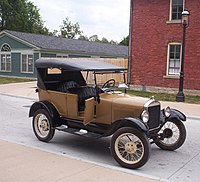
Photo from wikipedia
As energy generation based on renewable resources does not always match energy consumption profiles, Positive Energy Districts (PEDs) should embody energy flexibility technologies to decrease possible negative impacts on existing… Click to show full abstract
As energy generation based on renewable resources does not always match energy consumption profiles, Positive Energy Districts (PEDs) should embody energy flexibility technologies to decrease possible negative impacts on existing grids due to, e.g., reverse power flows. As part of the EU H2020 Smart Cities and Communities project POCITYF, the cities Alkmaar (NL) and Evora (PT) aim to support the deployment and market uptake of such districts and in doing so demonstrate innovative and integrated technologies to enable flexibility in the energy system. This paper addresses implementation conditions for energy flexibility technologies that help cities to engender the expected impact and ensure replication of these technologies to other sites. It aims to guide both urban planners and technology solution providers through pitfalls and opportunities that can appear during the design and implementation of PEDs. Taking this into consideration, the RUGGEDISED innovation and implementation framework for smart city technology was taken as a starting point to describe and analyze the experiences in Alkmaar and Evora.
Journal Title: Energies
Year Published: 2020
Link to full text (if available)
Share on Social Media: Sign Up to like & get
recommendations!